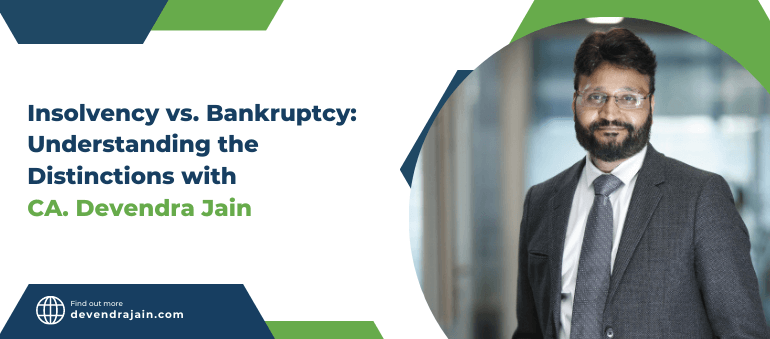The terms insolvency and bankruptcy are frequently used interchangeably when referring to debt. They mean quite different things, though. Insolvency is a state of financial affairs, whereas bankruptcy is a legal process. The Insolvency and Bankruptcy Code, 2016 (IBC) is India’s bankruptcy law that aims to unify the existing framework by combining insolvency and bankruptcy under a single body of law. In December 2015, the Lok Sabha heard the introduction of the Insolvency and Bankruptcy Code, 2015. On May 5, 2016, Lok Sabha approved it.
The distinction between bankruptcy and insolvency
Both people and companies can become insolvent. Both corporate and individual bankruptcy are phrases used to characterize these circumstances. Both words refer to a situation when a person or company’s assets are worth less than their liabilities, causing them to be unable to pay debt now or in the near future.
- According to the Insolvency and Bankruptcy Code, 2016 (IBC), insolvency is a “condition” in which one’s assets are insufficient to cover one’s obligations. If left unresolved, insolvency results in company liquidation and bankruptcy of Individuals.
- In contrast to bankruptcy, which is a scenario in which an application is submitted to a governing body claiming insolvency and asking to be declared bankrupt, which would last until discharge, insolvency emerges when there are insufficient assets to pay off the debts.
- It is clear from the foregoing that insolvency is a condition and bankruptcy is a result. While not all insolvencies will result in bankruptcy, a bankruptcy would be a decisive insolvent.
- There are typically two choices available in insolvency situations: settlement and recovery or liquidation.
Get assistance
Before declaring bankruptcy when facing financial difficulties, there are numerous options to think about. If you or your business are about to declare bankruptcy/insolvency visit C.A. Devendra Jain to learn more about solving bankruptcy/insolvency. It’s simpler than you would imagine. We can help you reestablish your financial stability and assist you in creating a repayment strategy and offering supportive guidance.

